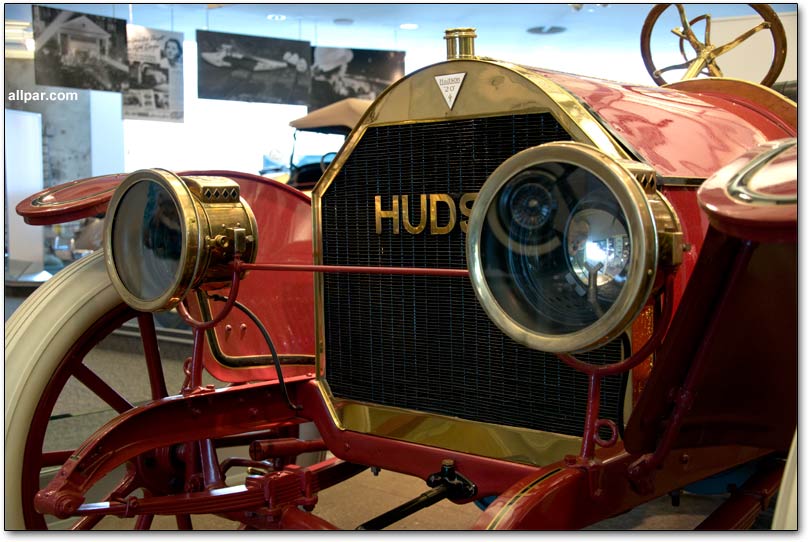Hudson
Most people probably have forgotten Hudson cars, which have been done here before. Named after Joseph Hudson owner of Hudson department stores and a heavy investor in the automobile venture, Hudson Motor Car Company was formed early in 1909 and a few months later their first cars rolled out of the factory in Detroit.
Behind the 1909 or 1910 Hudson runabout above is a 1948 Hudson Super club coupe. They're obviously at a Hudson enthusiasts' meet of some sort.
Because of price and quality, Hudson was popular early on, during the WWI era even was the world’s largest producer of six-cylinder cars. My Weller grandparents had a Hudson touring car in the nineteen-teens, drove it and a Model T Ford touring car when they left this house after Alfred’s death and moved to Ocilla, Georgia, where Pop was the Ford dealer for a few years.
If my time-turner would do it this morning, I’d go back twenty years and ask my father what model year their Hudson was, and what color. But once when I was fantasizing about time travel, a friend pointed out that there would never be time travel, otherwise people from the future would be here now.
So, I’m guessing it was probably black, and probably a 1915, 1916 or 1917. Alfred had just turned 18 when he died, and I’m guessing that as the apple of Pop’s eye he probably picked it out and that he probably drove it.
In late 1947 when the brand spanking new 1948 Hudson hit the showrooms, our Hudson dealer here in Panama City was on W. 6th Street, on the north side of the street, across and a block or so east of Daffin Mercantile. The building, pictured on +Time a time or two already, is still there, pretty shabby.
It will be pulled down someday, but for the moment it serves use.
It will be pulled down someday, but for the moment it serves use.
Hudson was mainly a “middle-price” car along with Pontiac and Olds, Buick, Mercury, DeSoto, and very handsome.
During the 30s they offered the Essex in the low-price market,
and then the Terraplane,
and during the “compact car” era of the mid-50s they offered the Hudson Jet with conservative styling that proved not a hot seller, though I liked it
My best memories of the Hudson are the prewar models that resumed for 1946 and 1947. At the time I judged them homely cars, but anymore I see them as near classics, especially convertibles and four-door sedans with the “suicide doors.”
Hudson struck the tone for new postwar styling with their 1948 cars, which were, at the time, stunningly beautiful, wide and low to the ground, and with something new called “step-down” design.
Hudson offered two models, Super and Commodore, and two engines, a straight six and a straight eight. A practiced eye spotted Commodore or Super instantly by the trim over the front headlights and by whether the taillights were plain or fancy. And interiors of the two models were vastly different, the Super spartanly plain, the Commodore a presentation of luxury. Shortly they introduced bug-named Hudsons with the supercharged Hudson Hornet and then the lower level Hudson Wasp.
No air conditioning in those days. And even with the new 1948 models when Olds, Pontiac and Cadillac had Hydramatic and Buick was just introducing Dynaflow on their top of the line Roadmaster models, Hudson still had only three-on-the-tree manual shift transmissions, but the available overdrive was really neat, because it could be shifted without using the clutch. And Hudson offered quirky semi-automatics until 1951, when they began purchasing the popular and excellent Hydramatic transmission from General Motors.
In the 1950s Hudson merged with Nash to become American Motors, which has been talked about here before. Hudsons from that point on were not Hudsons at all, but rebadged Nash automobiles. Some quite nice, some hideously chromed and colored.
The last cars badged "Hudson" were 1957 models. After that both Nash and Hudson became Ambassador and Rambler. The old ways weren't best, but they were more interesting.
TW
236 W. 6th Street, Panama City, Florida





























